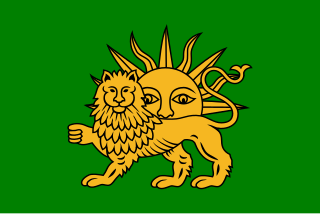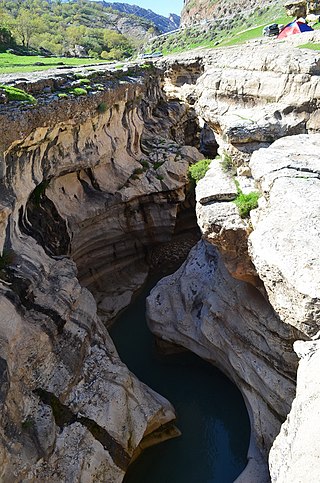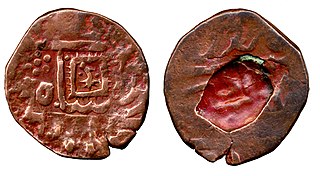Related Research Articles

The Safavid dynasty was one of Iran's most significant ruling dynasties reigning from 1501 to 1736. Their rule is often considered the beginning of modern Iranian history, as well as one of the gunpowder empires. The Safavid Shāh Ismā'īl I established the Twelver denomination of Shīʿa Islam as the official religion of the Persian Empire, marking one of the most important turning points in the history of Islam. The Safavid dynasty had its origin in the Safavid order of Sufism, which was established in the city of Ardabil in the Iranian Azerbaijan region. It was an Iranian dynasty of Kurdish origin, but during their rule they intermarried with Turkoman, Georgian, Circassian, and Pontic Greek dignitaries, nevertheless they were Turkic-speaking and Turkified. From their base in Ardabil, the Safavids established control over parts of Greater Iran and reasserted the Iranian identity of the region, thus becoming the first native dynasty since the Sasanian Empire to establish a national state officially known as Iran.

Shahre Ray, Shahr-e Ray, Shahre Rey, or Shahr-e Rey or simply Ray or Rey (ری), is the capital of Rey County in Tehran Province, Iran. Formerly a distinct city, it has now been absorbed into the metropolitan area of Greater Tehran as the 20th district of municipal Tehran, the capital city of the country.

Ilam Province is one of the 31 provinces of Iran. It is located in the western part of the country in Region 4 and covers 20,164.11 km2 (7,785.41 sq mi). It shares 425 km (264 mi) of the border with Iraq, and also bordering on the provinces of Kermanshah, Lorestan, and Khuzestan. The largest city and also the provincial capital is Ilam.

Luri is a Southwestern Iranian language continuum spoken by the Lurs, an Iranian people native to Western Asia. The Luri dialects are descended from Middle Persian and are Central Luri, Bakhtiari, and Southern Luri. This language is spoken mainly by the Bakhtiari and Southern Lurs in Iran.

Safi-ad-Din Ardabili was a Kurdish poet, mystic, teacher and Sufi master. He was the son-in-law and spiritual heir of the Sufi master Zahed Gilani, whose order—the Zahediyeh—he reformed and renamed the Safaviyya, which he led from 1301 to 1334.
The Ḥudūd al-ʿĀlam is a 10th-century geography book written in Persian by an unknown author from Guzgan. The title in full is حدود العالم من المشرق الی المغرب.
Lak is a Kurdish tribe native to Western Iran. They speak Laki, which is considered a Kurdish dialect by most linguists.

Mukriyan or 'Deryaz' was a Kurdish principality from the late 14th century to the 19th century centered around Mahabad. Mukriyan was a neighbor to the Emirate of Bradost.

Rawwadid, Ravvadid, or Banū Rawwād (955–1071) was a Sunni Muslim Kurdish dynasty, centered in the northwestern region of Adharbayjan (Azerbaijan) between the late 8th and early 13th centuries.

The Lurs are an Iranian people living in western Iran. The four Luri branches are the Bakhtiari, Mamasani, Kohgiluyeh and Lur proper, who are principally linked by the Luri language.

Vladimir Fyodorovich Minorsky was a Russian academic, historian, and scholar of Oriental studies, best known for his contributions to the study of history of Iran and the Iranian peoples such as Persians, Laz people, Lurs, and Kurds.
The Khorshidi dynasty, Abbasi dynasty or Shahs of Little Lorestan (1184–1597) was a Lur dynasty that ruled Little Lorestan in the later Middle Ages from their capital Khorramabad.

Manuchihr III was the 19th Shirvanshah from 1120 to sometime after 1160. He was the son and successor of Afridun I.
The Feyli Lurs are a collection of Lur tribes that primarily live in the Lorestan province of Iran. Their dialect is almost identical to that of standard Persian.

West Azerbaijan province is one of the 31 provinces of Iran, whose capital and largest city is Urmia. It is in the northwest of the country, bordered by Turkey, Iraq and Azerbaijan's Nakhchivan Autonomous Republic, as well as the provinces of East Azerbaijan, Zanjan and Kurdistan. The Iranian province is part of Region 3. It is separated from Armenia by Turkey's short border with the Azerbaijan Republic.
Lurs are an Iranian people living mainly in western and southwestern Iran. There is also a significant population of Lurs in eastern and central parts of Iraq The word Luristan or Lorestan, is attributed to the areas inhabited by the Lurs. The boundaries of Luristan stretch from the eastern Iraqi plains to the west and southwest of Iran. Today, Lorestan is the name of one of the western provinces of Iran.

Jahangir was the uncontested leader of the Aq Qoyunlu from 1444 to 1454, but afterwards fell into a dynastic struggle with his younger brother Uzun Hasan, who by 1457 had defeated him and assumed full power over the confederation. Jahangir later died in 1469.
The province of Lorestan was a western province of Safavid Iran, corresponding to the present-day provinces of Ilam and Lorestan. It was one of the five velayats of the country, and was thus ruled by a vali.
Mirza Mohammad Taqi Sepehr, also known as Mirza Mohammad Taqi Kashani, or with the honorific Lesan ol-Molk, was an Iranian court historian and littérateur of the Qajar era. He wrote with the pen name Sepehr, and is known for authoring the lengthy Persian chronicle Nasekh ol-tavarikh-e salatin-e Qajariyeh, also simply known as the Nasekh ol-tavarikh.
References
- ↑ Minorsky 1986, p. 829.
- ↑ Ehlers 2021.